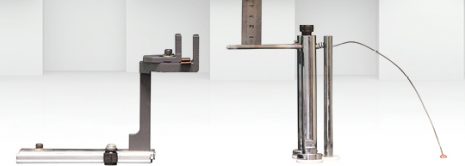Glow Wire Testing and Consumer Safety
The dreaded smell of burning plastic: Most people know that means something electrical is overheating and needs to be turned off. But what if it’s a dishwasher or refrigerator and no one is home?
The threat of a household fire is a global problem. In fact, the majority of fires worldwide (about 60 percent) are domestic, and most fire casualties occur in homes, according to a 2009 study commissioned by the Consumer Council at the Austrian Standards Institute. Because a significant portion of domestic fires started in electrical devices, fire prevention is essential in the home appliance industry.
Making Unattended Appliances Safer
The International Electrical Commission (IEC) developed a method to test the potential effects of an overloaded circuit or overheated component in a home appliance. For example, the IEC has established specific safety standards in IEC 60335-1 for appliances that are often run while unattended. Electrical connectors in these applications must pass glow wire testing to be compliant with the standard. Testing also applies to unattended equipment outside the household that could cause a hazard to the public (e.g., vending machines). Since 2001, European and many Asian countries have adopted the IEC standards to decrease the risk of household fires.
Examples of Products Subject to Glow Wire Testing:
- Washing machines
- Dryers
- Dishwashers
- Ovens
- Microwave ovens
- Cooking fans and hoods
- Refrigerators
- Freezers
- Water heaters
- Air conditioners
- Vending machines
The goal is to analyze the tendency of a connector’s plastic material to catch fire when wires are overloaded. Both raw materials and end products can undergo glow wire testing.
Molex Glow Wire Procedures
Molex performs testing for end products (IEC-60695-2-11 testing methodology) and runs the procedure twice. The test sample is fastened to a secure position with tissue paper beneath it. Then an element (or glow wire) is heated, first, to 750˚C, and it’s pressed onto a test sample for 30 seconds. If the sample ignites, the duration of the flame, its height and any drips from the melted test sample are recorded. The test is repeated at 850˚C. Connector material passes under the following circumstances:
- There is no ignition or any flames self-extinguish within 30 seconds after the test sample is removed from the heated element.
- If the test sample begins to melt, the drips do not ignite the tissue paper beneath it.
Our Glow-Wire-Compliant Product Lines
Molex offers a wide range of glow-wire-compliant connectors that meet all safety and environmental requirements mandated by the home appliance industry. Many of these connectors also provide premium features and a variety of options to meet your design needs while also delivering consumer safety. Visit our Glow-Wire Webpage today to find out more.
UL-94 and Glow Wire Testing: What’s the difference?
Look for the answer in our upcoming connector.com article this October.
